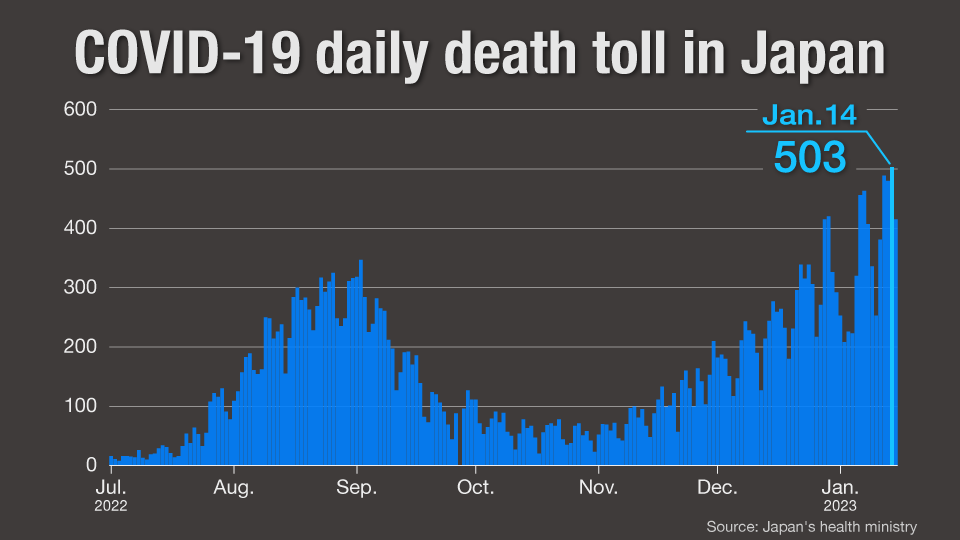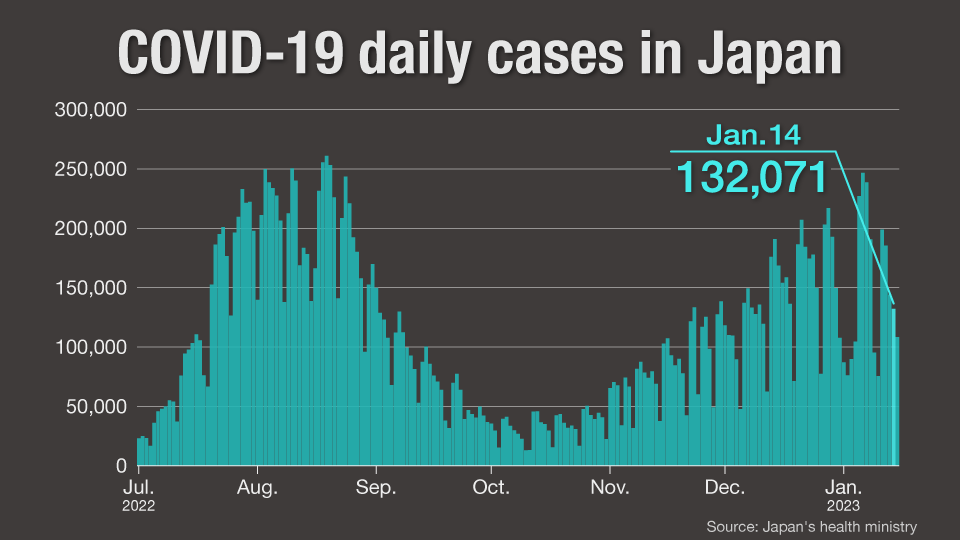This article is part of a series on important coronavirus-related information. Click here to read other installments: #Coronavirus the facts. Find the latest information on everything COVID-19.
Record COVID-linked deaths
Infectious disease experts are sounding the alarm about an uptick in coronavirus-related deaths. At a January 11 meeting with Japan’s health ministry they said the rate had hit record levels, and the curve may get steeper still. They also warned of an increase in group infections at nursing homes for the elderly and medical institutions.
On January 14, the health ministry said it had confirmed 503 deaths linked to COVID-19, the highest daily figure since the pandemic started.


More than 12,000 deaths in one and a half months
The total number of deaths since the pandemic began was 62,264 as of January 14. More than 12,000 of those -- roughly one fifth -- have occurred during the current eighth wave from December 1, 2022.
The health ministry said on January 14 that at least 4,998 people had died after contracting COVID-19 so far this month. That is clearly outpacing the rate of the past few months. Elderly people account for the vast majority of those deaths.
The National Institute of Infectious Diseases says around 60 percent of the deaths were directly caused by the coronavirus. The rest were attributed to heart failure, cancer, pneumonia, old age, aspiration pneumonia, or kidney failure, among other causes.
The infectious disease experts advising Japan’s health ministry worry that infections at nursing homes could cause more COVID-related deaths. The health ministry says 69 percent of cluster infections in Japan occurred at nursing homes over nine days by January 3.
Infections on the rise
The experts said the number of infections fell temporarily during the year-end and New Year period but has since been on the rise.
The occupancy rate of hospital beds for COVID-19 patients now exceeds 50 percent in many prefectures, over 70 percent in some, and over 80 percent in one. The number of cases in which ambulance staff struggle to find hospitals that can accept patients has risen, surpassing the levels seen during the peak of the seventh wave in the summer of 2022.
The experts noted that as time passes after vaccination or infection, people's immunity to the virus decreases. And there has been a rise in cases of the BQ.1 sublineage of the Omicron variant in Japan, which is believed to have a higher capacity to evade the immune system.
The experts said that with infections surging in China, and the seasonal flu season beginning in Japan, medical systems need to be strengthened in order to be able to provide appropriate care to older people and those at high risk of developing serious symptoms. And they advise people to choose vaccines designed to target Omicron variants and to stock up on antigen self-test kits.
Actual number may be invisible
Professor Hamada Atsuo of Tokyo Medical University Hospital attributes the recent increase in deaths to three factors: 1) Rising infection numbers, despite a lower rate of severe illness than before. 2) Underlying health problems in older patients being exacerbated by COVID. 3) Insufficient Omicron-targeting vaccine coverage among the elderly.
According to Hamada, the currently dominant virus is similar to the one that caused the previous seventh wave. Its pathogenicity, such as the fatality rate, does not appear to have changed significantly, but the number of infection cases is simply increasing. “The official number of reported cases is still lower than the total for the seventh wave last summer, but infection cases are not being reported with the same thoroughness as they were then,” he says. “So, the current wave may already have caused more infections than the last one, but those infections are invisible. Medical institutions are properly recording deaths, which is why that rate has reached a record high.
“Initially, COVID deaths from serious lung inflammations attracted attention, but now, people are also dying from heart or brain infarctions due to blood vessel disorders caused by infections."
Hamada says the key to reducing the mortality rate is to reduce infections among those most at risk. He says only 60 percent of the elderly are vaccinated against Omicron variants, and only 30 percent of the population as a whole -- a figure he says is woefully inadequate.
This information is accurate as of January 16, 2023.
